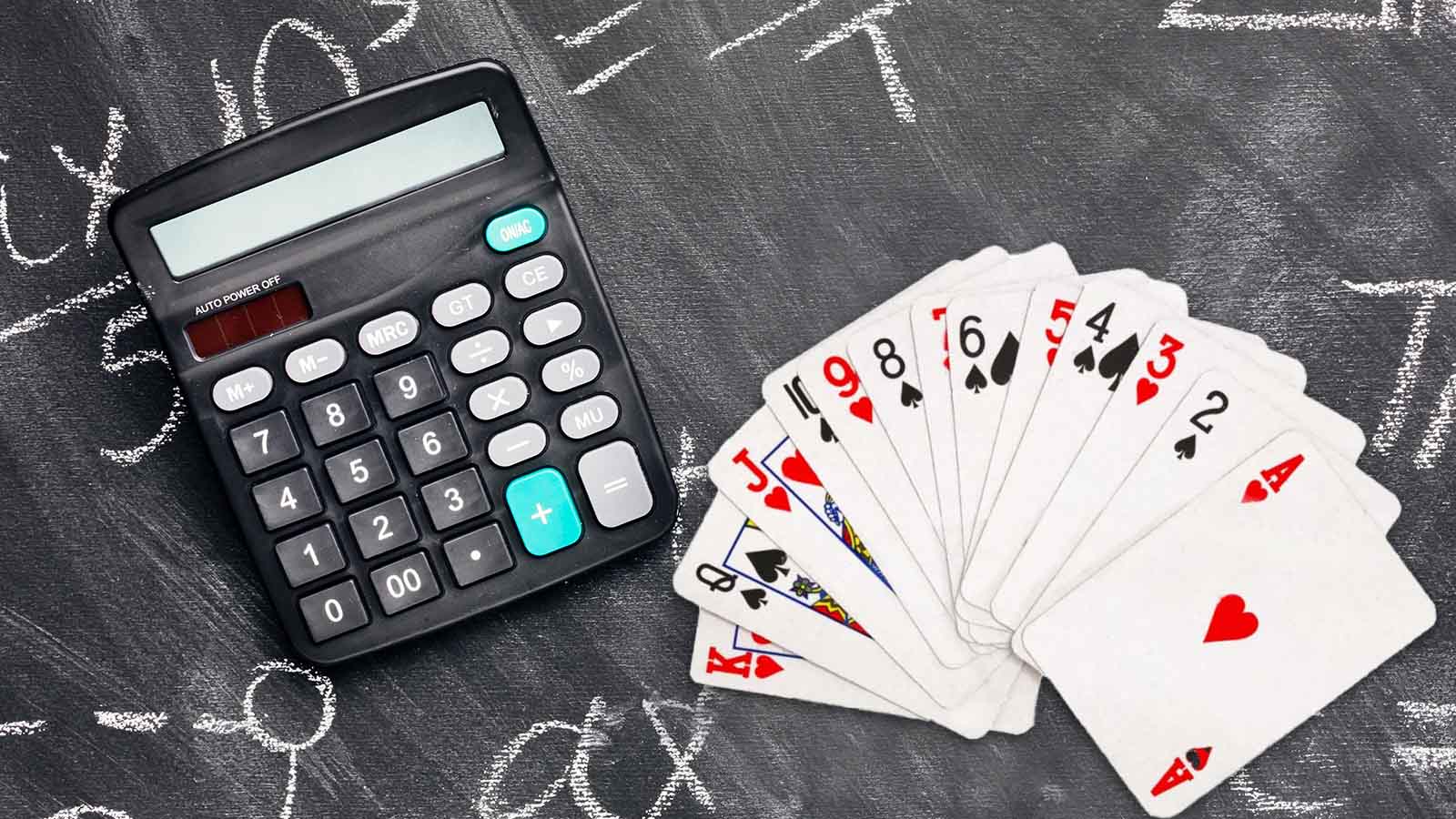The Only Pai Gow Strategy Guide You’ll Ever Need

Welcome to our comprehensive Pai Gow guide, where we’ll teach you everything you need to know to play Pai Gow Poker with confidence. We’ll take you from the basics of the game to the mathematically proven Pai Gow strategies that can help you get the best results possible when you play this game online or in the casino.
- The Ancient Historical Origins of Pai Gow
- Sam Torosian and the Invention of Pai Gow Poker
- How House Edge Works in Pai Gow Poker
- How to Play Pai Gow Poker
- Basic 5 Card Poker Hands
- A Step-by-Step Guide to a Round of Pai Gow Poker
- Best Pai Gow Strategy for Each Possible Hand
- Bonus Bets
- Banking: Do it As Often as Possible
- Three Rules to Remember When Playing Pai Gow
- Where to Play Pai Gow Poker Online
The Ancient Historical Origins of Pai Gow

Pai Gow is an ancient Chinese game that originated sometime before or during the Song Dynasty. The game is related to other dominoes games, and is the ancestor of the western games that use these tiles. The name literally translates to “make nine.”
Pai Gow is played with a set of 32 tiles. Players are dealt four tiles, and are then asked to make “front” and “rear” hands of two tiles each. In order to win, either the player or the dealer must beat the other in both hands. If one wins the front and the other wins the rear, the hand results in a push – a very common result in this game.
One key rule is that the rear hand must be of a higher value than the low hand. The highest-ranking hands are made via pairs. Special combinations known as “Gong” and “Wong” rank next. All other hands are ranked by the number of pips on the tiles making up the hand, with only the final digit of the total counting. This is similar to baccarat, meaning that nine is the best pip hand, and zero the worst.
Sam Torosian and the Invention of Pai Gow Poker

Casino games from blackjack to video poker have intriguing origin stories, and Pai Gow Poker is no exception.
In 1985, a Filipino customer at the Bell Card Club in Los Angeles told owner Sam Torosian about a game a 13-card poker game called Pusoy. Similar to Chinese Poker, this game had players arranging three hands out of their 13 cards in order to beat opponents.
While Torosian thought this game would be too slow for American casinos, he invented a seven-card version with just two hands that could be easily taught and played more quickly by new players. Torosian had invented Pai Gow Poker, and the game quickly spread to Las Vegas and beyond.
Unfortunately for Torosian, he never patented the game. Torosian consulted both a lawyer and poker author Mike Caro, both of whom told him – incorrectly – that a card game like his couldn’t be patented. Thus, while games like Three Card Poker and Let It Ride have creators who earn money off the licensing of their games, Torosian hasn’t made money off the proliferation of Pai Gow Poker.
How House Edge Works in Pai Gow Poker

All games that are offered by casinos have a house edge, which represents the percentage of each bet that the casino will win over the long run from players. This can also be expressed as a return to player (RTP), a number that represents how much of each bet a player can expect to recover in the long run. Players can reduce the house edge in games like blackjack and Pai Gow by using proper strategies during play.
In Pai Gow Poker, the theoretical house edge when the dealer is acting as the bank is about 2.51%. However, this number does require a perfectly optimal Pai Gow strategy, which is difficult to quantify. Instead, the “house way” strategy offers a house edge of 2.72%. When acting as the banker, the player can potentially get the house edge down to just 0.04%, with 0.25% being the expected edge using the house way strategy.
Playing with a strategy can reduce the house edge in Pai Gow Poker by as much as 2.8%.
How to Play Pai Gow Poker

Pai Gow Poker is a game in which the goal is to beat the dealer in both of two hands. It has similarities with various other casino games, utilizing both the hand-setting from traditional Pai Gow along with the hand rankings and types that you may be familiar with from Texas Hold’em or Caribbean Stud Poker.
Pai Gow Poker is played using a 53-card deck. This is a standard deck that also includes one joker. This joker is wild, but only to a limited extent: it may only be used to complete a straight, flush, or straight flush, or be used as an ace.
At the start of each hand, each player must make a bet. They will then receive seven cards. The player must then separate their cards into a back hand of five cards, as well as a front hand of two cards. The player has freedom to set their hands as they like, with the only rule being that the back hand must have a higher value than the front hand.
After the player has set their hands, the dealer will then flip over their cards. The dealer will set their cards into two hands using a strict method known as the “house way.”
The player hands are now compared to the dealer’s hands. The five-card hands are ranked according to normal five-card poker rules, with two exceptions. First, the best possible hand is five aces, consisting of four aces and the joker. Secondly, most casinos rate a straight of A-2-3-4-5 as the second-best straight after A-K-Q-J-T, as it is also considered “ace high” in this game.
For the two-card hands, the only possible ranks are a pair or high card. If at any time the player and the dealer tie on either hand, the dealer is considered to have won that hand.
If the player beats the dealer on both hands, then the player wins even money on their bet, minus a 5% commission on wins. If the player wins one hand but loses the other, then the bet is considered a push. If the dealer wins both hands, then the player loses their bet.
Players also have an opportunity to act as the banker at some point in many casinos, or when playing Pai Gow online. This opportunity rotates around the table, with the dealer sometimes getting a chance to be the banker in between each player. As the banker, the player plays against the table, collecting any losing bets from other players (including the dealer), while paying out wins minus the 5% commission. Players are free to decline the opportunity to bank if they don’t wish to do so.
Basic 5 Card Poker Hands
For the most part, Pai Gow uses the same basic poker hand rankings that you may be familiar with from games like Texas Hold’em or Seven Card Stud. When comparing the five-card hands, the better ranking hand using traditional ranks wins. For your two-card hand, the only possible ranks are one pair or high card. If you’re not familiar with how to play poker, here’s a quick listing of the hands you can make, ranked from strongest to weakest.
| Hand | Cards |
|---|---|
Royal Flush | Ace, King, Queen, Jack, and a 10 of the same suit |
Straight Flush | Any five consecutive cards of the same suit |
Four of a Kind | Four cards of the same rank |
Full House | Three cards of one rank, and two cards of another rank |
Flush | Any five cards of the same suit |
Straight | Any five cards of consecutive ranks |
Three of a Kind | Three cards of the same rank |
Two Pair | Two cards of one rank, and two cards of another rank |
One Pair | Two cards of the same rank |
High Card | All hands with no pairs, straights, or flushes |
A Step-by-Step Guide to a Round of Pai Gow Poker
Pai Gow Poker is played in a straightforward fashion that’s easy to learn. Here’s a quick look at the breakdown of each step of a typical Pai Gow hand.
The bet
At the start of each hand, you will place one bet of any size within the minimum and maximum table limit. The dealer will then deal seven cards to each player, as well as seven cards to themselves.
Revealing of hands
Players may now examine their cards. Each player must set a five-card back hand and a two-card front hand. The five-card hand must have a higher poker value than the two-card hand. After all players have set their hands, the dealer will reveal their cards. The dealer also must set two hands, but will do so via the rules of the “house way,” which is set by the casino and can vary slightly between casinos and sites that offer Pai Gow online.
Winning

In order for the player to win, they must beat the dealer on both of the front and back hands. If one of the hands is a tie or a win for the dealer, then the hand is determined to be a push. If the dealer wins or ties on both hands, the player loses their bet.
Payouts
All wins in Pai Gow poker are paid out at even money. In addition, the casino typically deducts a 5% commission from every win.
Best Pai Gow Strategy for Each Possible Hand
One of the most important parts of Pai Gow strategy is understanding how to set your seven cards. The proper approach varies depending on the type of hand you initially have. The following Pai Gow guide will teach you how to set your hands no matter what you start with.
Hands with no pair, straight or flush
In this case, play your second and third highest cards in the lower (front) hand.
Two pair
Where the highest pair is Aces
When your top pair is aces, split your pairs, placing the smaller pair in the lower hand.
Where the highest pair is Kings
Split your pairs here as well, unless your other pair is deuces. In that case, keep both pairs in the higher (back) hand, then put your two highest other cards in the lower hand.
Two pair, Tens and below
If you have an ace, play your two pairs together in the high hand, and use the ace and your next highest card in the low hand. Otherwise, split your pairs.
Two pair, Jacks – Aces
Always split these pairs, keeping the higher pair in the high hand.
Three pair
Play the highest pair in your low hand, keeping the other two pairs in your high hand.
Three of a kind
In most cases, keep your three of a kind together in the high hand. The one exception is three aces; in this case, play a pair of aces in your high hand, and use the other ace and the next highest card in the low hand.
Full house
In most cases, you should split your full house, keeping the three of a kind in the high hand and your pair in the low hand. If you have an additional pair, keep a full house (including your lower pair) in the high hand, and use the better pair in your low hand.
Straights and flushes

Generally, keep your straight or flush in your high hand, choosing an option that allows for the highest possible card to stay in the low hand. If you also have two pairs, then split your pairs according to the two pair rules above.
Four of a kind
Four of a kind, sixes or lower
Always keep the four of a kind together in your high hand.
Four of a kind, 7s – 10s
Split your four of a kind into two pairs, unless you have an ace available to play in your low hand.
Four of a kind Aces, Kings, Queens or Jacks
Always split these four of a kind into two pair, unless you have another pair that you can play in the low hand.
Five Aces
Normally, split two aces into the low hand and keep three in your high hand. The only exception is if you also have a pair of kings, in which case you can keep your five aces in the high hand.
Bonus Bets
Bonus bets are special side bets that players can optional choose to wager on during each hand. These bets are usually based on the strength of your hand, the dealer’s hand, or some combination of both. While these bets can be fun from time to time, keep in mind that they come with high house edges and are not part of the optimal Pai Gow strategy.
Banking: Do it As Often as Possible
The option to bank moves from player to player around the table throughout play. In some games, players will only be able to bank every other hand, with the dealer serving as banker at least half the time.
While this option can be intimidating, as you’ll be playing against the other people at the table, banking is the best thing you can do to lower the house edge. As long as you can afford it, bank whenever given the option.
Three Rules to Remember When Playing Pai Gow

- Don’t Ignore Your Front Hand – When playing Pai Gow, it can be tempting to see a huge hand and immediately place it in the back, not worrying about what you’re leaving for your two-card option. However, this is a common mistake, as you should always follow the Pai Gow tips we outlined above.
- Banking is Always Better – No matter how much strategy you use during your hand setting, nothing matters as much when impacting the house edge as whether you are a player or the banker in a given hand. Bank as much as possible to get the maximum return to player for each of your sessions.
- The House Way Option – At most casinos and online sites, you’ll always be given the option to set your hands via the house way at that venue. While this isn’t always the optimal way to play your hands, it comes very close, and is a great option if you’re confused over how to split a particularly complex hand.
Where to Play Pai Gow Poker Online
With the advice above, you should be able to play Pai Gow Poker like a pro. Pai Gow strategy may seem a bit complex, but by following the rules we’ve set out above, you’ll be sure to get the most out of every single hand you play.
Whether you’re looking to play for real money or just practice your skills, the best way to get better at this game is to play Pai Gow online. Sign up today with one of our top online casinos, where you can play safe, fair games of Pai Gow Poker any time you like.